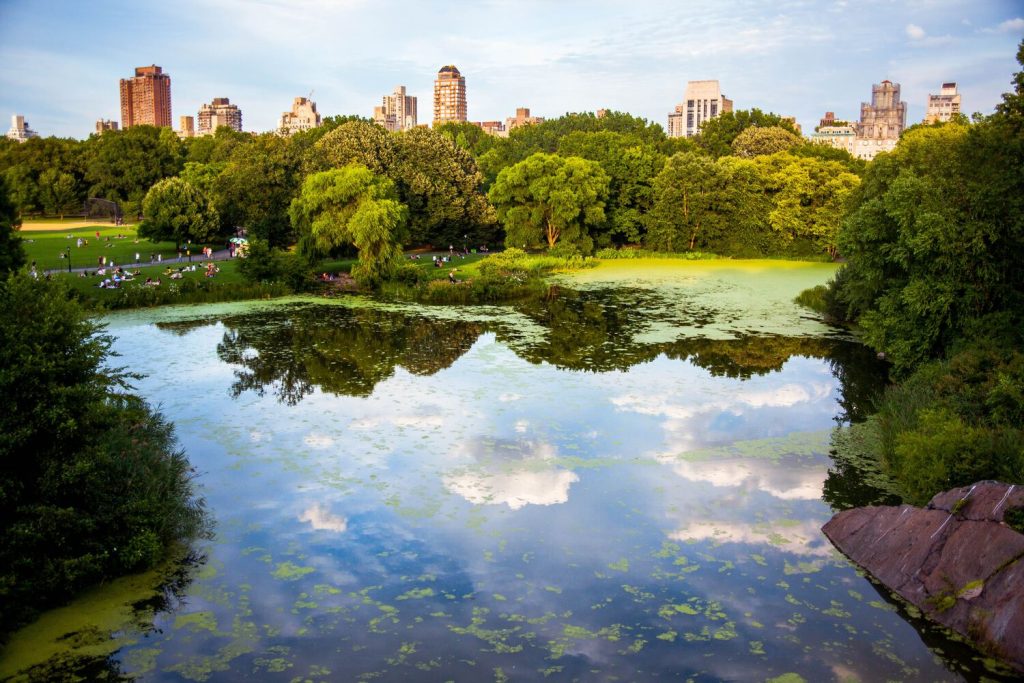Proč je dnes krajinářská architektura důležitější než kdy dříve – Why Landscape Architecture Matters Now More Than Ever
- Autor:
- Claire Brodka
- Zdroj:
- https://www.archdaily.com/1004201/why-landscape-architecture-matters-now-more-than-ever
Landscape architecture is having a moment. The latest proof: last week, the US Department of Homeland Security decided to accredit the field with its prestigious STEM designation. As part of the science, technology, engineering, and mathematics (STEM) educational disciplines that fall under this category, landscape architecture students can now spend an additional 24 months seeking employment and training post-graduation in the United States after an initial period of a year granted to all graduates. The title also promises more prestige, higher entry salaries, and additional career flexibility. Torey Carter-Conneen, CEO of the American Society of Landscape Architects (ASLA), calls the development a significant advancement for ‘landscape architecture education and practice, and that is great for America and the global community.’
The news corresponds to a growing emphasis on landscape architecture as a pivotal practice around the globe in recent years – one that is closely connected to notions of public health, environmental design, biophilia, sustainability, and re-wilding. It also underlines the intimate relationship between technology and the discipline. Landscape proposals increasingly rely on advanced science and technology to predict how ecological interventions might alter an existing terrain and determine what measures will yield the highest benefit for both humans and nature. The contemporary ideal of wild meadows and biodiverse forests may exist free from external influence, but the path to get there requires assistance.

This trend toward returning ecologies around our built environment to their original form or adapting them for an increasingly uncertain climatic future has been gaining momentum for a number of years. We take a look back at how the paradigm shifted from manicured lawns to wildflower meadows and examine select landscape projects from our database.
Though American Frederick Law Olmsted is often cited as the modern ‘father of landscape architecture’ due to his work across North America (most notably New York City’s Central Park), he was arguably preceded by a UK counterpart. John Claudius Loudon was a Scottish botanist, landscape architect, and journalist whose writings promoted ideas of public parks, private gardens, and domestic architecture throughout much of the Western World as early as 1803. While ideas of formalizing nature in this way had hitherto been mostly reserved for royal parks and palaces – one prominent example being André Le Nôtre‘s work on the Versailles of Louis XIV, with earlier designs dating back as far as Ancient Egypt – Loudon’s work gave the general public access to spaces that introduced to their booming cities an (albeit highly manufactured) return to nature.
Any creation to be recognized as a work of art, must be such as can never be mistaken for a work of nature. –– John Claudius Loudon
True to Loudon’s philosophy, while these early landscapes were considered breathing spaces for city dwellers, they were anything but natural. Little thought was given to local flora and fauna, and indigenous plant patterns made way for orderly hedges and exotic highlight pieces. It wasn’t until the Arts & Crafts movement of the later 19th century that planned landscapes began to more accurately reflect and incorporate their surroundings and transform into the lushly architectured urban green spaces across many metropolises in the Global North and South.

A real environmental awakening of the discipline, however, didn’t occur until the mid-20th century. Rachel Carson’s Silent Spring broke onto the scene with vigor in 1962, exposing the dangers of pesticides and reexamining the risks of human intervention in an already delicate ecological system. Landscape architects such as Ian McHarg and Roberto Burle Marx picked up the green baton, later followed by the likes of Norman Foster, Piet Oudolf, Martha Schwartz, or Doug Farr.
These days, we find ourselves at another inflection point. With landscape and architecture being more intertwined than ever due to changing climates around the globe, an increasing number of practices dedicate their time and efforts to holistic rehabilitation projects that involve highly specialized scientific methods to move from an anthropocene design language to one that centers ecological symbiosis between humans and nature. Seed banks have transformed from a ‘Doomsday’ architecture into National Pavilions at Venice’s 2023 Architecture Biennale and passive decarbonization strategies are becoming ever more prevalent, to name only a few indicators of this trend.
Popular design movements such as Lo-TEK – built around indigenous, regenerative technologies – re-wilding, and circularity challenge preconceived notions of construction and argue for a less invasive, conservationist, and interdependent approach to landscape architecture and design. Taking into account the highly specific nature of each local site and its history, the work of studios like SCAPE, Hood, Cave_bureau, MNLA, DnA, or Zewde is paving the way for a renewed paradigm shift that utilizes the powers of technological advancement to restore visions of landscapes past.
